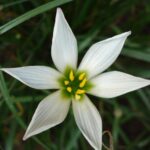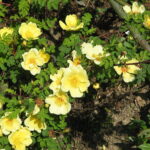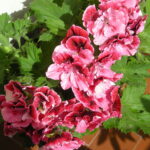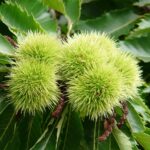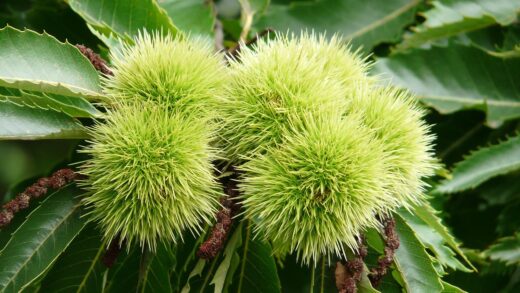Diseases and pests of the golden rose
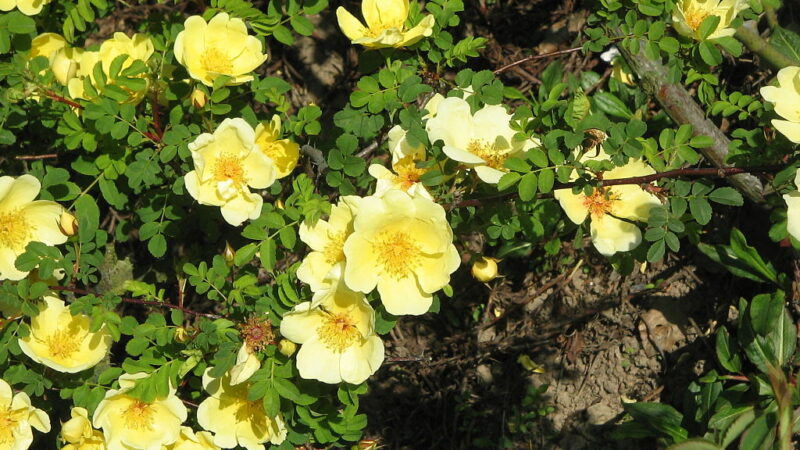
Even a resilient and robust shrub like the golden rose is not entirely immune to the challenges posed by diseases and pests. A watchful gardener who can identify and address these issues promptly is the plant’s best defense. Understanding the common culprits, from fungal diseases that mar the foliage to insects that feed on tender growth, is the first step toward effective management. The most successful approach is an integrated one, prioritizing prevention through sound cultural practices, such as proper siting and sanitation, while being prepared to intervene with appropriate treatments when necessary. A proactive strategy ensures that minor problems do not escalate, allowing the golden rose to remain a healthy and beautiful centerpiece in the garden.
Common fungal diseases
Fungal diseases are among the most prevalent issues affecting roses, and the golden rose is no exception. Black spot, caused by the fungus Diplocarpon rosae, is one of the most recognizable. It manifests as dark, circular spots with fringed margins on the upper surfaces of the leaves. As the disease progresses, the area around the spots will turn yellow, and eventually, the entire leaf will drop from the plant. Severe defoliation can weaken the shrub, reduce its vigor, and make it more susceptible to other stresses. The fungus thrives in warm, wet conditions and overwinters on infected fallen leaves and canes.
Another common fungal ailment is powdery mildew. This disease presents as a distinctive white or grayish, powdery coating on the surfaces of leaves, stems, and flower buds. Unlike black spot, powdery mildew is often more prevalent in humid weather with cool nights and warm days, and it can spread rapidly in crowded plantings with poor air circulation. While it may not cause the dramatic leaf drop associated with black spot, a severe infection can cause leaves to curl and distort, and can hinder the proper opening of flower buds, diminishing the plant’s ornamental value.
Rose rust is a third fungal disease to be aware of. Caused by various species of the Phragmidium fungus, it appears as small, orange-colored pustules on the undersides of the leaves. If you rub a finger over these pustules, an orange, rust-like powder will come off. Later in the season, these pustules may turn black. Heavily infected leaves will often turn yellow or brown and drop prematurely, weakening the plant. Like other fungal diseases, rust is favored by moist conditions and can be a persistent problem in certain climates.
Botrytis blight, or gray mold, is a fungus that primarily attacks the flowers of the rose. It thrives in cool, damp weather and can cause flower buds to rot on the stem before they even have a chance to open. On open flowers, it can appear as brownish, water-soaked spots on the petals, which may quickly become covered in a fuzzy gray mold. This disease is particularly problematic during prolonged periods of spring rain, right when the golden rose is preparing for its main floral display.
More articles on this topic
Prevention as the best defense
The most effective strategy for managing fungal diseases is to prevent them from taking hold in the first place. This begins with providing the golden rose with its ideal growing conditions. Planting it in a location with at least six hours of full sun each day is critical, as sunlight helps to dry the foliage quickly, making it less hospitable to fungal spores. Equally important is ensuring good air circulation. Avoid planting in overcrowded areas and perform regular pruning to open up the structure of the shrub, allowing air to move freely through the canes and leaves.
Proper watering techniques are a cornerstone of disease prevention. As fungal spores require water to germinate and spread, keeping the foliage as dry as possible is paramount. Always water the golden rose at its base using a soaker hose or drip irrigation, rather than using overhead sprinklers which wet the entire plant. If you must water by hand, do so in the early morning so that the sun has ample opportunity to dry any leaves that may have gotten wet. This simple practice can dramatically reduce the incidence of black spot, powdery mildew, and rust.
Garden sanitation is another crucial preventative measure. Fungal spores can overwinter on fallen leaves and infected plant debris. In the autumn, it is essential to do a thorough cleanup around the base of the rose, raking up and disposing of all fallen leaves. Do not add diseased leaves to your compost pile unless you are certain it reaches temperatures high enough to kill the pathogens. Throughout the growing season, be vigilant about removing and destroying any leaves that show the first signs of infection to slow the spread of the disease.
Finally, promoting overall plant health makes the golden rose naturally more resistant to diseases. A plant that is stressed by poor nutrition, inadequate water, or other environmental factors is an easier target for pathogens. Ensure the soil is fertile and well-drained, and follow a balanced fertilizing schedule. A healthy, vigorous plant has a stronger immune system and is better equipped to fend off fungal attacks on its own.
Identifying and controlling common pests
In addition to diseases, several insect pests can trouble the golden rose. Aphids are perhaps the most common. These small, pear-shaped insects can be green, black, or pink and typically cluster on the tender new growth of stems and flower buds. They feed by sucking sap from the plant, which can cause distorted growth, and they excrete a sticky substance called honeydew, which can lead to the growth of sooty mold. Fortunately, aphids are relatively easy to control. A strong spray of water from a hose can often knock them off the plant, and beneficial insects like ladybugs and lacewings are voracious predators of aphids.
Spider mites are another sap-sucking pest, but they are much smaller than aphids and can be difficult to see with the naked eye. They thrive in hot, dry conditions and are usually found on the undersides of leaves. Their feeding causes a fine, yellowish stippling on the foliage, and in severe infestations, you may see fine webbing on the plant. To control spider mites, you can hose down the plant, paying special attention to the undersides of the leaves, as they dislike high humidity. Horticultural oils and insecticidal soaps are also effective treatments.
Sawfly larvae, often referred to as rose slugs, are another pest to watch for. These small, caterpillar-like larvae feed on the soft tissue of the leaves, leaving behind the papery, translucent epidermis, a type of damage known as “skeletonization.” They can cause significant cosmetic damage quite quickly. Since they are not true caterpillars, certain biological insecticides that target caterpillars are not effective against them. Instead, they can be hand-picked off the plant or controlled with insecticidal soap or neem oil sprays.
Other potential pests include thrips, which are tiny insects that can damage flower buds, and leaf-rolling sawflies, whose larvae roll up leaves for protection while they feed. The key to managing all these pests is regular inspection of the plant. By checking your golden rose frequently, you can catch infestations early when they are much easier to control. Early intervention prevents pest populations from exploding and causing widespread damage.
Integrated pest management strategies
An Integrated Pest Management (IPM) approach is the most responsible and sustainable way to handle pest and disease problems on the golden rose. IPM is a holistic strategy that combines various management tactics, prioritizing the most environmentally friendly options first. It begins with the preventative cultural practices already discussed: proper siting, sanitation, and watering. The goal is to create a healthy garden ecosystem that naturally discourages pests and diseases.
A key component of IPM is the encouragement of beneficial insects. Ladybugs, lacewings, parasitic wasps, and hoverflies are all natural enemies of common rose pests like aphids. You can attract these helpful allies to your garden by planting a diversity of flowering plants, particularly those with small flowers like alyssum, dill, and yarrow. Avoiding the use of broad-spectrum chemical pesticides is also crucial, as these chemicals will kill beneficial insects just as readily as they kill the pests, disrupting the natural balance of your garden.
When intervention is necessary, IPM dictates that you should start with the least toxic methods first. For insect pests, this might mean physical removal (hand-picking or a strong spray of water), followed by the use of “soft” pesticides like insecticidal soaps or horticultural oils if the problem persists. These products have a lower impact on beneficial insects and the environment compared to conventional synthetic insecticides. They work by smothering soft-bodied insects and must come into direct contact with the pest to be effective.
For fungal diseases, if preventative measures are not enough, fungicides may be required. There are many options available, including those based on sulfur, copper, or neem oil for organic gardening, as well as more conventional synthetic fungicides. If you choose to use a fungicide, it is important to apply it preventatively, before the disease becomes widespread, and to follow the label instructions precisely. Rotating between different types of fungicides can also help to prevent the pathogens from developing resistance.
Treatment options and applications
When treating the golden rose for a specific pest or disease, accurate identification is the first critical step. Different problems require different solutions, and applying the wrong product will be ineffective and may even harm the plant or the environment. Once the issue is identified, and you have chosen an appropriate treatment, timing and proper application are essential for success. Most sprays, whether they are insecticides or fungicides, need to be applied thoroughly, ensuring complete coverage of the affected areas of the plant. For many pests and diseases, this includes the undersides of the leaves, where they often hide or originate.
The best time to apply any spray treatment is typically in the early morning or late evening when temperatures are cooler and the wind is calm. Spraying in the heat of the day can cause the product to evaporate too quickly and can lead to burning of the foliage. Spraying in calm conditions ensures that the product goes onto the target plant and does not drift onto other plants or into the surrounding environment. It is also important to avoid spraying when rain is forecast, as the rain will simply wash the product off before it has a chance to be effective.
Always read and follow the directions on the product label. The label provides crucial information on the correct mixing rate, the recommended frequency of application, and any necessary safety precautions, such as wearing gloves or eye protection. Using more product than recommended will not make it more effective and can be harmful to the plant and beneficial insects. For many issues, repeat applications will be necessary to break the life cycle of the pest or disease.
Finally, consider the long-term health of your garden ecosystem. While chemical treatments can provide a quick fix, relying on them exclusively can lead to a cycle of dependency and may harm the very beneficial organisms that help keep pests in check. By embracing an IPM approach and using treatments as just one tool in a larger toolbox of preventative and cultural practices, you can manage problems effectively while fostering a healthier, more resilient, and more vibrant garden for your golden rose to flourish in.
📷 Meneerke bloem, CC BY-SA 3.0, via Wikimedia Commons








